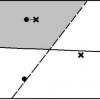Free Online Productivity Tools
i2Speak
i2Symbol
i2OCR
iTex2Img
iWeb2Print
iWeb2Shot
i2Type
iPdf2Split
iPdf2Merge
i2Bopomofo
i2Arabic
i2Style
i2Image
i2PDF
iLatex2Rtf
Sci2ools
109
Voted
ICIP
2002
IEEE
2002
IEEE
Efficient video similarity measurement with video signature
The proliferation of video content on the web makes similarity detection an indispensable tool in web data management, searching, and navigation. In this paper, we propose a number of algorithms to efficiently measure video similarity. We define video as a set of frames, which are represented as high dimensional vectors in a feature space. Our goal is to measure Ideal Video Similarity (IVS), defined as the percentage of clusters of similar frames shared between two video sequences. Since IVS is too complex to be deployed in large database applications, we approximate it with Voronoi Video Similarity (VVS), defined as the volume of the intersection between Voronoi Cells of similar clusters. We propose a class of randomized algorithms to estimate VVS by first summarizing each video with a small set of its sampled frames, called the Video Signature (ViSig), and then calculating the distances between corresponding frames from the two ViSig's. By generating samples with a probability ...
ICIP 2002 | Ideal Video Similarity | Image Processing | Voronoi Video Similarity | Web Makes Similarity |
Related Content
| Added | 24 Oct 2009 |
| Updated | 27 Oct 2009 |
| Type | Conference |
| Year | 2002 |
| Where | ICIP |
| Authors | Sen-Ching S. Cheung, Avideh Zakhor |
Comments (0)

